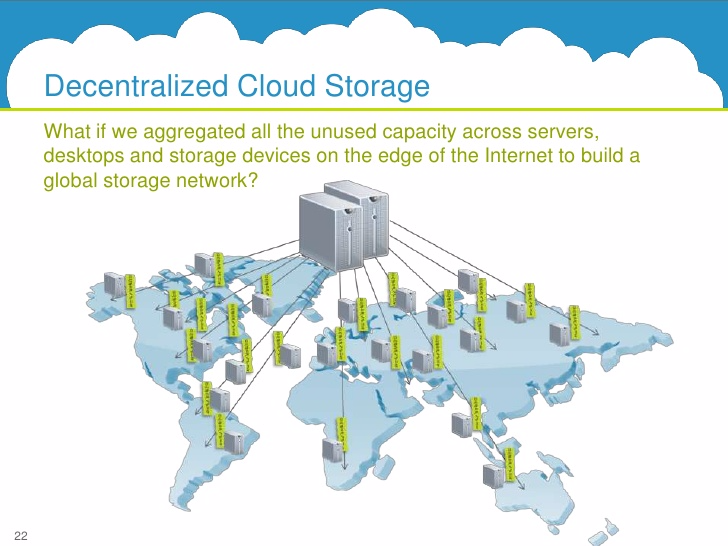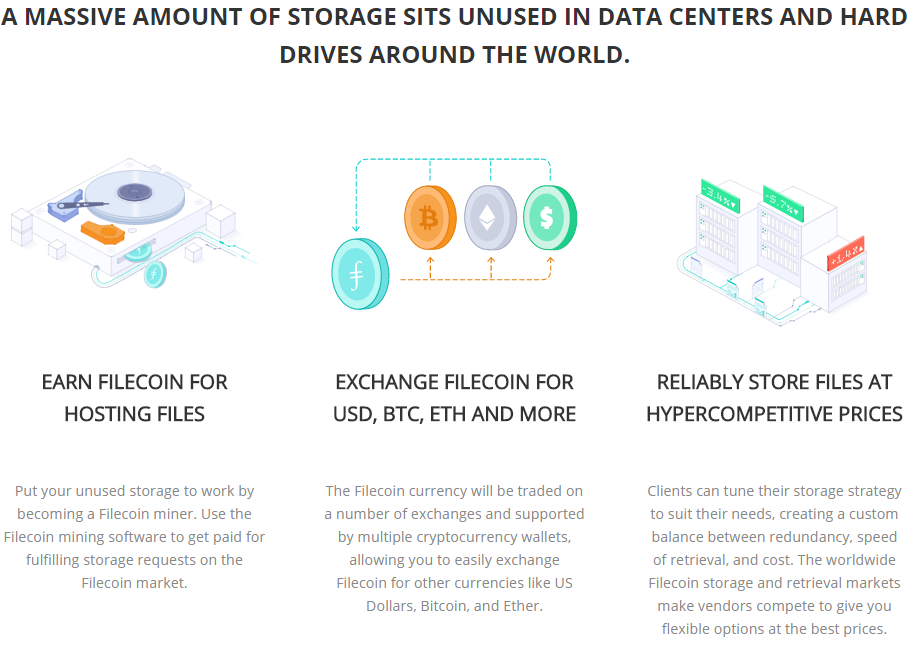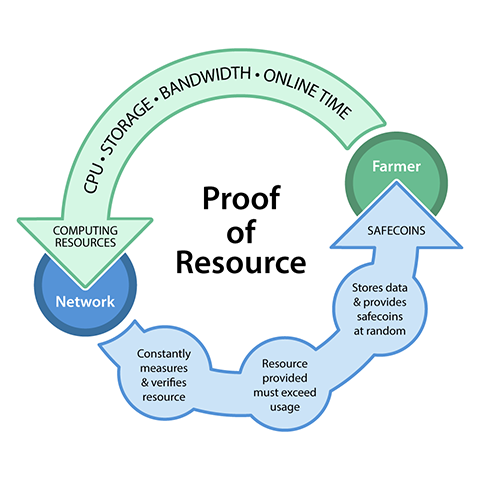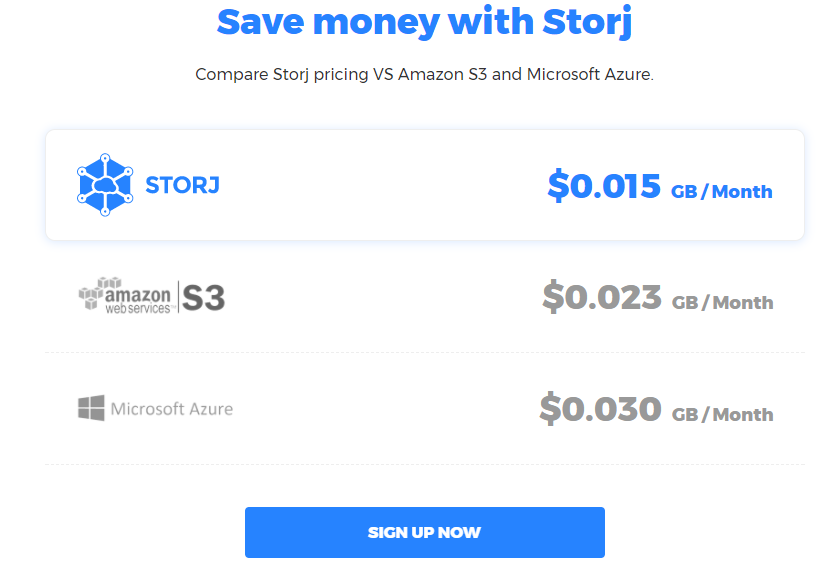In light of the recent Equifax hack, exposing over 143 million Americans confidential information, one must ask, can we really trust these giant corporations with our most sensitive data? Equifax is just another number on the list of companies that have failed to keep their customer’s data safe. In July 2017, Verizon had a data breach and lost 14 million customers information.
The list goes on for 2017, going to show that storing data in a central location is very susceptible to being breached. The Verizon breach is a classic example of a company outsourcing data to storage providers, this one in Israel called Nice Systems. Nice Systems is a very reputable company, that boasts more that 25,000 customers in 150 different countries, but still they weren’t able to prevent a breach. The data accessed was the customers name, customer phone number, and PIN associated with the account; enough information to access a persons Verizon account. With this information, a user could take over a customers phone including social media and email accounts.
Centralized storage has the issue of single point of failure, that point being where the data is stored at the facility. Along with that, companies like Amazon Web Services (AWS) have been known to abuse customers or rival companies data. Deep Roots Analytics was using an AWS server and due to a configuration error there was no protected access, so all someone had to do breach the sensitive information of 198 million Americans was navigate the six-character Amazon sub-domain. And that’s exactly what happened, exposing very sensitive information to the web and now there is a class action lawsuit against Deep Roots Analytics.
Big Data
For the short lifetime of the World Wide Web, corporate giants (Facebook, Google, etc.) have controlled a majority of the data and made a very handsome profit off our data.
We are going to create more data in 2017, than every year previous in human history. Data is everything now, whether it’s your smartphone counting the number of steps you took today or your car’s computer checking the engine or brake pads and analyzing data to suggest when maintenance is needed. A self-driving car can generate up to 1-gigabyte second, which after about three minutes is more data than the largest storage option on the iPhone currently, 256 GBs.
Currently, AWS, known as S3 (Simple Storage Service) is the main front runner in the cloud, with Dropbox, Google Drive, IBM, and Microsoft’s Azure behind them competing for their share of the market, which continues to grow.
These companies all charge a premium for storage in comparison to what the decentralized cloud options offer.
Decentralized Cloud
There are four decentralized cloud platforms: Filecoin, MaidSafe, Siacoin, and Storj. The idea behind these four is to rent out unused harddrive space around the world, which there is a lot of. Think about the desktop you have at home, you could turn it into a revenue-generating asset.
Sharing economy is the future. Market participants will drive market price via supply and demand for storage instead of arbitrary prices set by centralized cloud providers like S3, IBM, etc.

The advantage these provide is the redundancy across multiple nodes. Redundancy in data is simply extra copies of it stored or pieces of the copy stored in case of error in storing or transmission of data, as to prevent loss or partial loss of files.
Security and privacy of your files are better on decentralized network. Your files are broken apart and spread across multiple nodes. So even if a node wants to look at your file, it’s encrypted with a private key that only the file owner has. Along with the fact that it is only a partial file, meaning that it doesn’t matter if the host even gets into your file, it’s a fraction of its original self.
Another advantage decentralized storage offers is close proximity to the server, which means your data will be accessible quickly whether it is the website that is stored on it or simply files you are trying to recover.
Centralized storage units have to set up new facilities which are costly and take time and staff to maintain them. On top of that, you’ll never get the proximity to servers that a decentralized storage can offer as anyone who has a harddrive with free space can offer storage.
Recently human error caused US-East 1 of Amazon S3 to go down, leading to websites and services like Business Insider, Medium, Giphy, and others impacted. Simply due to an incorrect piece of code typed in, thus a larger set of servers were removed; the servers were down for around 4 and half hours.
These coins are similar for the most part, but there are key differences.
Filecoin
Filecoin made headlines recently when it raised $257 million in it’s Initial Coin Offering (ICO) this August, the largest amount raised by an ICO to date. Filecoin was initially going to be open to U.S. investors, but due to a SEC statement that The DAO’s tokens may be considered securities, Filecoin postponed their ICO and left it open to accredited investors in the U.S. For those unaware, an accredited investor is a person who has an annual income of more than $200,000 or a net worth over $1 million.
These actions left many people out of their ICO and it shows for their community as well. They have 1,374 subscribers on their Reddit page, but the posts are very infrequent and lucky to have one post a day. This is generally frowned upon in the crypto community, when a coin lacks a community itself, never a good sign.

Filecoin is apart of Protocol Labs, which is the parent company to the InterPlanetary File System (IPFS). Protocol Labs mission statement says:
We believe the internet has become humanity’s most important technology. We build protocols, systems, and tools to improve how it works. Today, we are focused on how we store, locate, and move information.
IFPS looks to replace HTTP (HyperText Transfer Protocol, that thing not many people understand but see in their search bar every day) to make a better and more efficient web. It liberates data from silos, survives network partitions, works offline, routes around censorship, and gives permanence to digital information. The reason I include IFPS is that it can work together via Filecoin providing the backbone storage layer for the IFPS if the product(s) come to fruition.
Protocol Labs has other three other projects under them too: LibP2P, ILPD, and Multiformat.
Filecoin offers a novel Proof-of-Storage:
- Proof-of-Replication, allows storage providers to prove that data has been replicated to its own uniquely dedicated physical storage. Enforcing unique physical copies enables a verifier to check that a prover is not deduplicating multiple copies of the data into the same storage space
- Proof-of-Spacetime, where blocks are created by miners who are storing data, which doesn’t require the computation power of Proof-of-Work (PoW). Filecoin protocol provides a data storage and retrieval service via a network of independent storage providers that does not rely on a single coordinator, where: (1) clients pay to store and retrieve data, (2) Storage Miners earn tokens by offering storage (3) Retrieval Miners earn tokens by serving data.
The following are the intuitions on how the Filecoin DSN (Decentralized Storage Network) achieves integrity, retrievability, public verifiability, and incentive-compatibility. This is from their whitepaper:
- Achieving Integrity: Pieces are named after their cryptographic hash. After a Put request, clients only need to store this hash to retrieve the data via Get and to verify the integrity of the content received.
- Achieving Retrievability: In a Put request, clients specify the replication factor and the type of erasure coding desired, specifying in this way the storage to be (f;m)-tolerant. The assumption is that given m Storage Miners storing the data, a maximum of f faults are tolerated. By storing data in more than one Storage Miner, a client can increase the chances of recovery, in case Storage Miners go offline or disappear.
- Achieving Public Verifiability and Auditability: Storage Miners are required to submit their proofs of storage to the blockchain. Any user in the network can verify the validity of these proofs, without having access to the outsourced data. Since the proofs are stored on the blockchain, they are a trace of operation that can be audited at any time.
- Achieving Incentive Compatibility: Informally, miners are rewarded for the storage they are providing. When miners commit to store some data, then they are required to generate proofs. Miners that skip proofs are penalized (by losing part of their collateral) and not rewarded for their storage.
- Achieving Confidentiality: Clients that desire for their data to be stored privately, must encrypt their data before submitting them to the network.
Hosts storing data must verify that they have the data they are supposed to be storing otherwise they will be penalized. A noted downside is that clients must encrypt their data if they desire it be stored privately.
You can currently join Filecoin’s “Early Mining Program” on their website where you fill out a form and wait to hear back for access to the program.
So far, Filecoin is yet to release a product, which puts it in last place in my opinion behind Storj, Sia, and MaidSafe who all offer a working platform where you can mine, host and store data currently.
MaidSafe
Massive Array of Internet Disks – Secure Access For Everyone or also known as MaidSafe. Maidsafe’s goal is to be the world’s first Autonomous Data Network via blockchain based storage solutions that store a data identifier (e.g. hash) in a blockchain, but store the data ‘somewhere else’ do not improve the security of our data. That ‘somewhere else’ still needs to be secured, and if this data can be deleted, or our access denied these ‘solutions’ are not fit for purpose. The SAFE Network removes people from the management of our information to protect the world’s data.
What is SAFE?
SAFE is simply an Autonomous network, that keeps out human interference and alteration to protect the network from abuse. Here is a summary of the safe network from David Irvine, CEO of MaidSafe:
“SAFE at it’s core is an “Autonomous Network“, not a set of federated servers, or owned storage locations, or identifiable nodes, but actually an autonomous network. This means no human intervention, no humans setting prices, no altering configurations to make things work, no tweaking data on disk, no altering rules of the nodes, absolutely no human intervention apart from running a piece of self configuring, self healing software. The network decides prices, rewards and how to protect data, communications and calculations, not any human!”
Maidsafe currently runs off the Proof of Resource (PoR) algorithm. PoR on the Safe Network is similar to Zero Knowledge proofs, where in the farmer/miner doesn’t know the content on any data, but instead knows that the data is held and that it is held accurately.

Nodes that are either unreliable or are trying to game the network, by removing the previously provided resource, they are ‘deranked’ by the network if the node is unable to serve a chunk of data. A node, in this case, would be a farmer who is supposed to validate data.
Project Decorum
The Safe Network also has another project under it called Project Decorum, which the name decorum is originally derived from the original concept of DECentralized fORUM. Soon after starting this project they realized this project had more potential to extend across not just forums, but all social networks. As stated on their website, Decorum’s goal is to realize a decentralized social platform, fit for all kinds of digital social activity.
You can test out Project Decorum at the moment, they explicitly state to expect bugs and that it’s a ‘quick & dirty’ version and does not represent the future of Project Decorum.
Here is a quote from Project Decorum:
Limitations and known issues
The SAFE Network currently lacks a proper API for dynamic data. As a temporary workaround, the Proof of Concept makes unintended use of the SAFE Network DNS system. This means that a new public ID is registered for your account for every new post you make. A known issue with this approach is that after many posts (well over a hundred), the SAFE Launcher may bug out, preventing further activity with that account. Since the data for the current test net will be wiped, this is not a big problem, but be aware nonetheless.
Maidsafe Community
Maidsafe’s Reddit isn’t too active, but I joined their Slack channel which was quite active. One thing I noted about their slack channel was they made people state why they were joining and then had to be approved by a moderator beforehand. I liked this since many Slack channels are plagued with scammers trying to get naive investors to send them Ethereum.
Storj
Storj, formerly known as Storjcoin X (SJCX), is a project that made a key partnership recently. That partnership was with Filezilla, the FTP (File Transfer Protocol) storage client that allows people to access files online. This gives the 15 million users of Filezilla the option to use Storj as there option to store their files.
There is a caveat though since this is run through Filezilla, it means users won’t have to pay using Storj token. This means the Storj token won’t be necessary for the platform, which takes the utility away from the token itself. Though Storj has a nice incentive offering 25GB of free storage and bandwidth per month for new users who sign up with the platform.
Storj recently struck a deal with Cap Linked for storage; Cap Linked is an enterprise storage platform. Very promising news to see for Storj and decentralized storage in general. People are noting the future here.
Storj Labs service takes data as inputs and splits it up into multiple pieces distributing it across a peer-to-peer network of nodes. And because each part is privately encrypted, only the right key can unlock the files in full.
Cap Link is one of many enterprise storage offering cloud storage like Google, Dropbox, Microsoft, and more, except Cap Link is trying to set themselves apart by utilizing the decentralized storage; offering cheaper data storage than any other option currently.
Though it is unknown at the moment if users using CapLinked for storage will be utilizing the Storj token itself. I assume it will be the same case as with Filezilla where it wasn’t necessary to utilize the Storj token for data storage. This is important to note, as the utility in the token is not necessary for the platform itself, thus making the token more or less a security of the Storj company than a token utilized among their ecosystem.
Storj runs off Proof of Retrievability guarantee the existence of a certain piece of data on a remote host.
Below is a comparison of Storj pricing per gigabyte (GB)/month versus current centralized storage providers. As you can see, Storj cut’s your price in half if you are using Microsoft Azure and saves you 35% if you switch from AWS S3.

Here is a statement from F.A.Q. section on what Storj Labs is and differs from Storj:
Our corporate entity Storj Labs aims to bring decentralized cloud storage to the average business and consumer. With constant data breaches and high costs, users are becoming more aware that the current model of cloud storage is broken. Storj Labs provides DaaS (Data-as-a-Service), as well as help building tools and APIs for customers to be able to interface with this new cloud storage model.
Storj is the cloud platform itself, allowing decentralized apps to be built upon it, including an image viewer, .txt and .pdf viewer, a music player, and a video service. They are going for the whole pie, being the backbone layer of the internet, how AWS S3 is currently, hosting websites, and all their content.
One notable issue Storj went through was a leadership and management change in May and then another one in July. The Storj team blog said it was from startup pains, which caused the initial change in May, as Shawn Wilkinson the CEO stepped down from that position to CTO, to focus on the code base and working the community on the open source code.
In July the change was different, James Prestwich stepped down from his role as COO and CFO to pursue other opportunities. Shawn Wilkinson also transitioned to Chief Strategy Officer (CSO) to work on the companies strategy and vision. This left the Storj board to assume role as the CEO until a new CEO was put in place.
Storj Community
Storj’s reddit has 3,884 readers, though it is very active, with posts daily and community members responding to questions you ask. The Storj team is also active on their blog, keeping the community up to date with what the project is doing. Storj’s team does a very good job being transparent with their community, a big ‘plus’. This was shown throughout their management changes that happened between May and July.
Siacoin
I’m biased towards Siacoin, deal with it.
Siacoin has one goal, to be the backbone storage layer of the internet. Sia was conceived at HackMIT in 2013, with the idea of liberating unused storage space of the world and unite it into worldwide free market for data. Nebulous Labs is the parent company to Siacoin and is Venture Capital funded startup located in Boston, Massachusetts.
Sia offers complete privacy, by breaking up files into pieces, encrypting them, and distributing them across nodes. Since you hold your key, you own your data. No outside company or party can access or control your files, unlike traditional cloud storage providers. Siacoin has very high redundancy, as it stores your files across multiple nodes around the globe. And to recover a file you only need four of the forty pieces that are spread across the nodes.
The Sia team has been very transparent with its community throughout the whole process. A great example was when Sia announced they were building ASIC (Application Specific Integrated Circuit) Miners for mining Siacoin to help secure the network. The reasoning behind this was to protect the network from a 51% attack, which is where a miner or pool of miners take control of the hash rate and can control what transactions are put through or denied. Also, they could reverse transactions, allowing them to double-spend coins.
This announcement caused many angry Reddit members to come out against Sia, but that wasn’t for long as David Vorick (Sia CEO) wrote an in depth Reddit post explaining why they went ahead with the ASIC miner. I highly suggest you read that Reddit post, it really shows their commitment to the longevity of the project.
The ASIC miner is called Obelisk, which is being worked on by a team separate of the Sia team, as to let them focus on the Sia platform. Currently there have been 1,960 ASIC miners sold at a price of $2,400 per unit. Obelisk has 100x the power of a GPU, allowing owners of them to secure the Sia network.
Sia crushes centralized storage providers when it comes to storage costs and download bandwidth costs. It’s not even in the same ballpark, Sia reduces costs by over 90%.

Siacoin has a caveat, which is for the better, it requires the use of the token to store data; thus giving the token utility. This is so the smart contract can be completed, and it ensures that the host followed through with the contract so the customer can access the data they store on it. If a host doesn’t follow through with the contract they are not paid, and the payment is not received until the contract is complete.
People tend to complain that Siacoin has too high of a supply of tokens, so it’s price is hard to move. That’s why many in the cryptocurrency avoid it as investment, but if you see what they are trying to accomplish, being the backbone layer of the internet, you can see the light at the end of tunnel. As I stated earlier we are storing more data in 2017, than every year previous in human history combined.
Siafunds
Siafunds is a second cryptocurrency to Siacoin. There are only 10,000 Siafunds and all of them are premined. Nebulous inc. currently holds 8,835 of them, the remaining were sold in a crowdfund to finance Sia’s development.
3.9% of all successful contracts get paid out to holders of Siafunds. If you can get your hands on one, I highly suggest you buy one. They are currently sold on Bitsquare, and their price is going for 2.37 BTC. They were originally priced around $10,000, but with Bitcoins recent run from around $4,000 to $5,800, they are not as cheap now. I assume the people who listed their Siafunds haven’t changed their BTC price to reflect the change in BTC to USD.
Here is a guide on how to purchase Siafunds.
Sia Community
Sia has a very active community, you can check out their Reddit or Discord, where there is frequent work on Sia by community members. This is something that sets Sia apart from the other decentralized storage providers, their strong community, which comes from their team which is very transparent and focused on being the backbone storage layer of the internet.
Sia Stats is a great example of community participation. A community member put this together for Sia, so you can check storage prices, active contracts, transactions, and more.
Future of Data
I just gave you the tools, now you just have to open your mind up, and see the future of data storage. It’s a sharing economy, where data is controlled by the original owners, not the corporations or service providers. This is one of the most promising segments of blockchain to come out.
The change in storage will likely not happen overnight, but in 5 years you will see it being used by everyone. Filecoin, Maidsafe, Storj, and Siacoin are very promising projects and have the ability to all coexist with each other in the future. With the way data storage is heading, the market will be so big, it’s conceivable to see more than one of these providing decentralized cloud storage down the line.
TL;DR Decentralized storage is the future of data storage and a free web.
Disclaimer:
- This author has a stake in Siacoin.
- This is not investment advice, always do your own research. It is very important to do your own analysis before making any investment based on your own personal circumstances.
This is a Contributor Post. Opinions expressed here are opinions of the Contributor. Influencive does not endorse or review brands mentioned; does not and cannot investigate relationships with brands, products, and people mentioned and is up to the Contributor to disclose. Contributors, amongst other accounts and articles may be professional fee-based.

